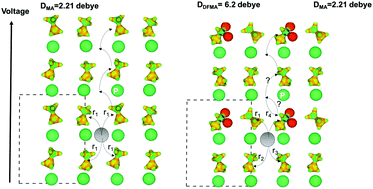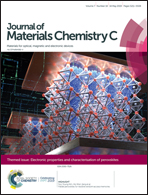Intrinsic stability enhancement and ionic migration reduction by fluorinated cations incorporated in hybrid lead halide perovskites†
Abstract
Improving the stability of hybrid perovskite solar cells is believed to be the main step toward large scale commercialization of this technology. In this work, we demonstrate that the stability can be enhanced significantly by proper fluorination of the methylammonium cation. A systematic study to identify the optimal stability of the perovskite material with low controlled concentrations of modified cations was conducted using density functional theory (DFT). Our results suggest a route to enhance the thermodynamic stability of hybrid inorganic–organic perovskites, while at the same time reduce the ionic diffusion. The optimal fluorination has no significant impact on the band gap or the volume expansion of the CH3NH3PbI3 perovskite. We demonstrate that the fluorination has a tendency to stabilize the material due to the strengthening of some initially weak hydrogen bonds between MA+ cations and the surrounding lead-iodide framework. The observed strengthening is the result of internal structural deformations which are related to the formation of long C–N bonds. Finally, we showed through calculation that fluorination should reduce significantly the iodine vacancy mediated diffusion in the perovskite under applied bias voltage.

- This article is part of the themed collection: Electronic Properties and Characterisation of Perovskites


 Please wait while we load your content...
Please wait while we load your content...